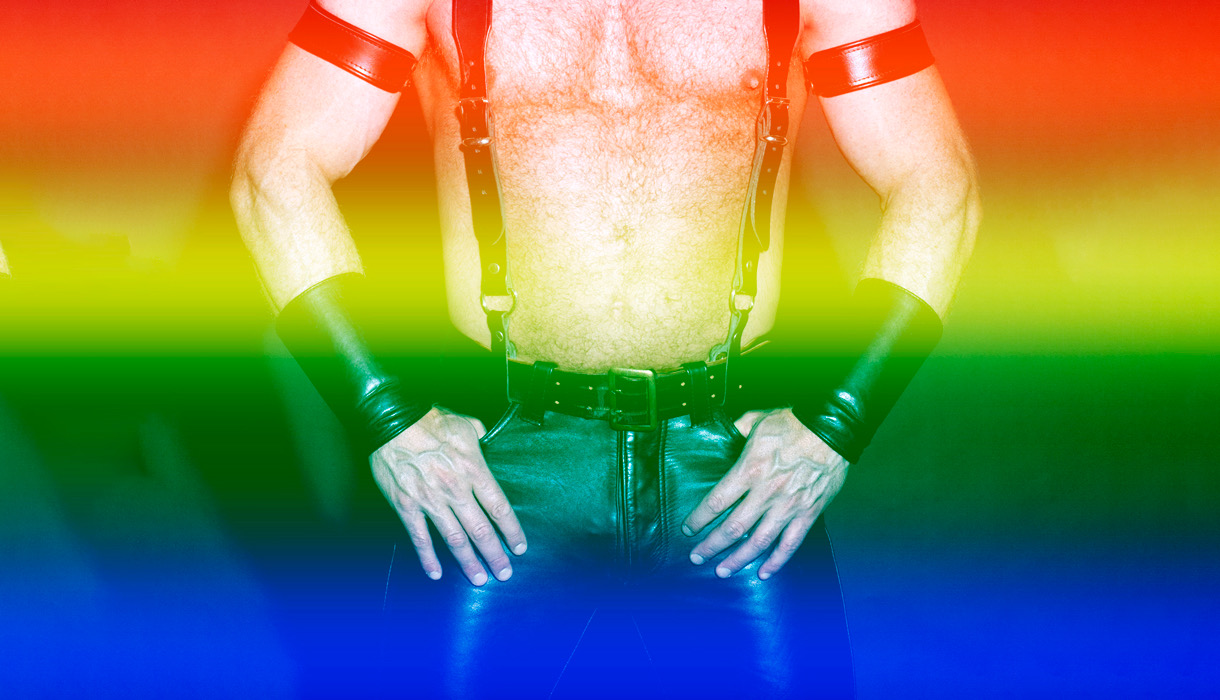
Does Kink Belong at Pride?
Understanding kink’s place at our LGBTQ celebrations.

This year, many smaller communities throughout the country and the greater Houston area are having their inaugural Pride celebrations. This is a huge accomplishment for the LGBTQ community as we start making ourselves visible in places other than the big cities. We know for a fact that queer people are everywhere. We are urban, suburban, ex-urban, and rural. We are as diverse in our geographic spread as we are in our pronouns. And that is beautiful.
However, as these smaller communities start dipping their toes into the cool, colorful waters of Pride, some of them are a little reticent about the, shall we say, kinkier aspects of our community. And in some cases, they are asking that, at least for the parade, we keep our Pride presence sanitized and family-friendly.
I know where these well-intentioned organizers are coming from. It’s fear. We queers know that fear very well. It’s a place rooted in white and hetero-supremacy-based culture that keeps “the other” at bay—the theory being that if we, the queer community, would just assimilate a little bit with the dominant culture, we will eventually be accepted by it.
That approach is one of the most insidious tricks hetero-supremacy culture plays on the queer commnuity. And I have to admit, it sounds reasonable enough at first. This idea it that we are somehow a Queer Trojan Horse, secretly infiltrating Hetero-Troy. What we fail to realize is that by acquiescing and assimilating, we are the ones being infiltrated. It is the Straight Trojan Horse that will take down Queer Troy, in fact.
To assimilate is entirely antithetical to the key principle of Pride, which is to be proud of who you are, even if you’re kinky as fuck. I’ve fallen for it many times, which is why I am now so wise. Picture it: Houston Pride, 2006. It was the first time I ever went to a Pride parade. I was still in the closet. Taylor Dayne was headlining, and everyone was popping their collars. I was surprised to see Taylor Dayne was still alive and singing, but what shook me to the closted core was when I saw two grown men in barely-there leather accoutrements, one of which was a “pup” mask. “Certainly,” I thought, as I clutched my pearls, “this type of look isn’t going to win over any straight person’s favor.”
I was uptight back when I was straight. I was also completely wrong. Over time, I came to appreciate the relevance of those “leather daddies,” as I would later learn that they were called. Those daddies, with their harnesses and pup masks, were as much a part of the evolving story of Pride as my closeted, gay ass was. Most of the year, the daddies likely aren’t wearing their gear out in public. But at Pride, they do—and that means I get to see leather and/or kink, and learn about it. I don’t have to participate in it. I don’t even have to like it. But I do have to recognize that in our wonderful queer community there is a leather and/or kink community, and it holds a lot of history that I need to know about.
For the record, I love leather daddies. Hit me up in my DMs if you are one.
But I digress.
Here’s the deal: let’s say we start excluding kink at the burgeoning small-town Prides because we think it harms the delicate sensibilities of others. Where does the exclusion stop?
When I went to Pride in 2010, a lesbian friend had a conversation with me about the fallacy of the gender binary that quite literally changed my life. The conversation started because I made a pretty disgusting comment about the presence of three transgender women who were celebrating alongside us. That conversation changed my perspective entirely about the experience of trans people.
At Pride 2014 it was my friend, a trans man, who explained to me that the notion that “pink is for girls and blue is for boys” was a social construct that had kept me in a virtual shame prison. The same construct that told me that “boys don’t play with Barbies, and they don’t put their mom’s silk nightgowns on their heads and pretend that it’s long hair.” I felt ashamed my whole life for loving Barbies and nightgown wigs, because society told me that it was shameful. I got Trojan Horsed by hetero-suremacy. And had it not been for Pride, I may have never realized it.
Clearly, there is a difference between being transgender, or kinky, or nonbinary. The point here is that at Pride there is a space for everyone, and there is a reason there is a space. Pride was born out of protest. In 1969, queer people were protesting about not being allowed to live openly and proudly. The mere fact that we dared to live openly on the streets of New York City was an offense to most of the world. Why then, in 2021, would we want to start telling the very people who were the first to show their Pride at those protests to “tone it down, Honey, there are children present”?
Fuck. That.
Pride is a magical space. It is where our wonderful queer community goes for the precise purpose of being seen by others. It is the place where we lift each other up and say to the world that we are a family, and you will not ignore us or tear us apart. You may not like kink, but you must recognize its place at our Pride celebrations. Otherwise, what’s the point? I may not be a big fan of the color orange, but I certainly recognize its right to be on our Pride flag. After all, what is a rainbow if you don’t see all of its colors?










